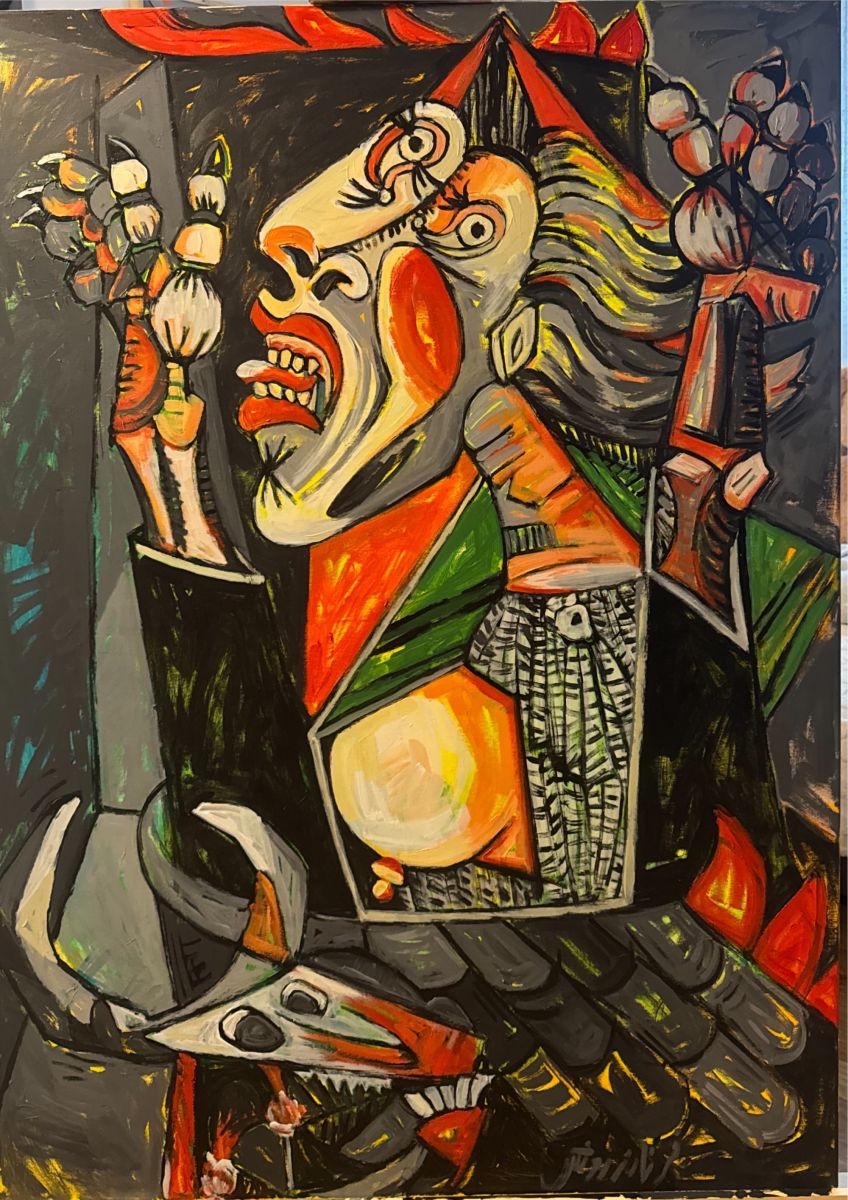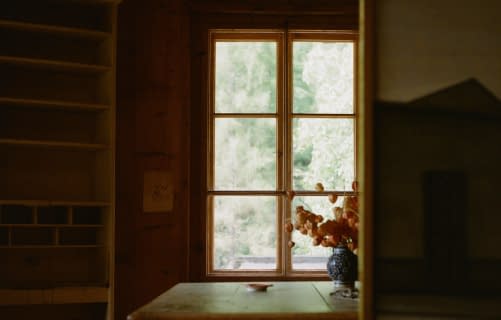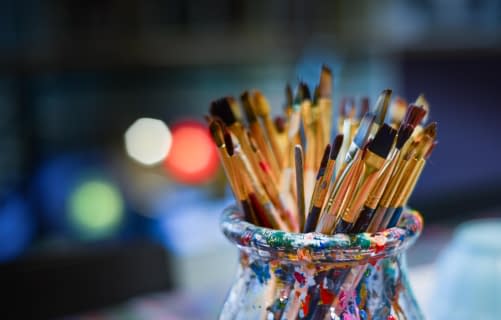Short Summary
Picasso characterised anti-war art, but his female figures often remained passive victims. In my work, I dissect not only his formal language, but also the narrative patterns. Inspired by feminist theory and the protest movement Woman, Life, Freedom, I transform suffering into resistance. Art becomes a weapon against oppression - an outcry for justice.
Pablo Picasso and the Radical Formal Language of Anti-War Art
Pablo Picasso is considered one of the most important artists of Modernism. With his cubist style, he dissected reality into fragments and created new perspectives on the visible. He is particularly known for his radical formal language and his clear anti-war stance.
His works, including the monumental Guernica (1937) and Weeping Woman (1937), are iconic depictions of war, suffering and human tragedy. While Picasso laments the horror of war in his art, the role of women in his paintings is often reduced to that of suffering victims.
Deconstruction: A New Artistic and Philosophical Strategy
In my art, I take up Picasso's aesthetic, but deconstruct not only the form but also the narrative function of his paintings. Deconstruction as an artistic and philosophical strategy opens up new possibilities for questioning and transforming existing meanings.
Inspired by Jacques Derrida's theories and Picasso's Weeping Woman, I use this method to reinterpret the representation of female suffering in art. My work is directly related to the protests of Iranian women, especially the Woman, Life, Freedom movement.
From Picasso to Art of Protest: The Transformation of the Screaming Woman
My current artworks Screaming Women take up Picasso's cubist formal language, but I radically change the narrative function of the figure. While Picasso's women are often depicted as passive sufferers, my protagonist becomes an active voice of resistance.
The distorted facial features, the screaming lips and the wide-open eyes no longer merely symbolise grief, but anger, courage and the indomitable will to change.

Technical Realisation: Fragmentation and Superimposition as an Expression of Protest
My technique is based on superimposition and fragmentation. Colours hidden under dark structures symbolise the repressed but unstoppable energy of protest. Bold brushstrokes and the deliberate destruction of classic female contours lead to the deconstruction not only of a work of art, but also of deeply rooted patriarchal narratives.
While Picasso's female figures often appear introverted and overwhelmed by suffering, I allow my figures to break out. They direct their cry outwards, demand space and refuse to play the role of victim. This image is inspired by the courageous women of the Iranian protest movement who are fighting against oppression and violence. Their cry is not just an expression of grief - it is an outcry for freedom.
Deconstruction as a Feminist Strategy
My work is a conscious reversal of traditional depictions of suffering women:
✔ Not passive, but active - The woman in my work doesn't just scream, she demands justice.
✔ Not romanticised, but raw and intense - pain is not an aesthetic, but a weapon.
✔ Not as a victim, but as a fighter - her tears do not signify resignation, but determination.
While Picasso's Guernica denounces the horrors of war, I transfer this idea to the fight of women against systematic oppression.
Art History and Feminist Resistance
My work follows in the tradition of artists such as Artemisia Gentileschi, Frida Kahlo and Käthe Kollwitz, who depicted female suffering not as passive suffering, but as an active expression of political and social realities:
In Susanna and the Elders, Artemisia Gentileschi for the first time showed a woman physically resisting male violence.
Frida Kahlo visualised her pain - not as a victim role, but as a sign of survival.
Käthe Kollwitz used art to protest against war and social injustice.
While these artists made suffering visible, I go one step further: I transform suffering into an active form of resistance.
At the same time, I take up Derrida's concept of différance: Meaning is not something that is fixed, but shifts depending on context. By transferring Picasso's iconic Weeping Woman to the current political reality of Iran, I create a new reading - away from helplessness and towards resistance.
Conclusion: Art as a revolutionary force
My painting is more than an aesthetic confrontation with existing works of art - it is a political statement. Screaming Woman is a tribute to all those women who raise their voices despite oppression, violence and danger. It is a symbol of the courage to stand up to existing power structures.
Deconstruction is not just a method of art criticism, but a strategy of resistance. By deconstructing and reassembling the classic representations of female suffering, I create a new visual language:
One in which women are no longer objects of pain, but active subjects of change.
Moreover, this is not just a formal reorganisation, but a political statement. I am taking a historical motif and placing it in a new, contemporary context.
At a time when women around the world - especially in Iran - are fighting for their rights, art must not only show mourning - it must also make resistance visible. Art is not just a reflection of the past, but a weapon for the future.
Author:
Art historian and painter
Doctoral candidate in art history at the Goethe University Frankfurt
Master of Painting
Cover image: Guernica Again and Again, Farzaneh Ravesh, Frankfurt am Main
Screaming Woman, Farzaneh Ravesh, 2024, Frankfurt am Main
Author: Farzaneh Ravesh






